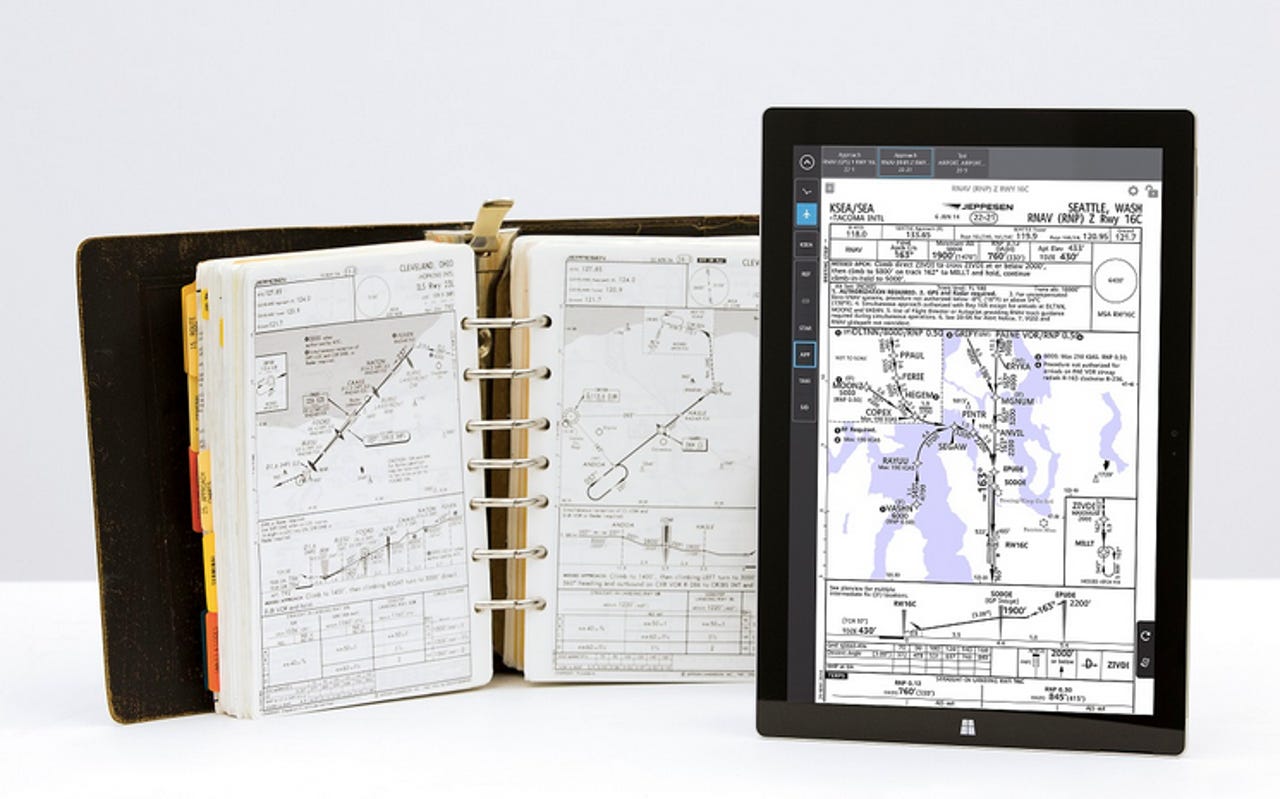Surface Pro 3s on planes: Microsoft gains FAA ‘flight bag’ clearance


Microsoft has announced its Surface Pro 3 has gained a qualification that should make it easier for airlines to select the Windows 8.1 tablet for electronic flight bag (EFB) initiatives.
EFBs can be used to store and display navigational charts and aircraft reference materials that traditionally were kept on paper in the cockpit.
Microsoft scored a minor coup last year when Delta Air lines announced plans to provide 11,000 Surface 2 tablets to pilots as EFBs, apparently against the wishes of some pilots who preferred Apple's iPad. The Delta agreement was announced a few months ahead of Microsoft officially gaining FAA approval for the Windows RT-based Surface 2 to be used as EFBs.
Like the Surface 2's approval, the Surface 3 Pro is good to go through "all phases of a flight, as defined by both the FAA and the European Aviation Safety Agency (EASA)," according to Microsoft's director of Surface Cyril Belikoff.
"Through this assessment process, Surface Pro 3 completed rigorous environmental and situational tests, satisfying a lengthy and important part of the FAA authorisation process. Now, when airlines look to select the feature-rich Surface Pro 3 for their EFB initiatives, deployment timelines will be significantly decreased, and the device itself may be used to its full computing potential, versus serving just as a simple document reader," Belikoff said.
Microsoft also announced that the navAero mounting system for the Surface Pro 3 had joined its Designed for Surface accessory partner program. The mount lets the Surface to connect to onboard power and data systems in the cockpit.
The benefits to pilots, according to Microsoft, include automatic updates to navigational and operational content and access to real-time weather, wind and turbulence data.
An airline, Delta noted with the Surface 2 roll out, could save 1.2 million gallons per year due to the lighter load of the Surface 2, which weighed 1.5 pounds compared to a traditional flight bag's weight of around 38 pounds. The Surface Pro 3 is a tad heavier at 1.76 pounds.
Microsoft has pitched the Surface Pro 3 as a hybrid and potential replacement for the popular MacBook Air. Following an earlier US launch, it began selling the device in 25 new markets at the end of August and claimed to have seen unexpectedly good demand for the product.